
Deutsch-Chinesische Enzyklopädie, 德汉百科


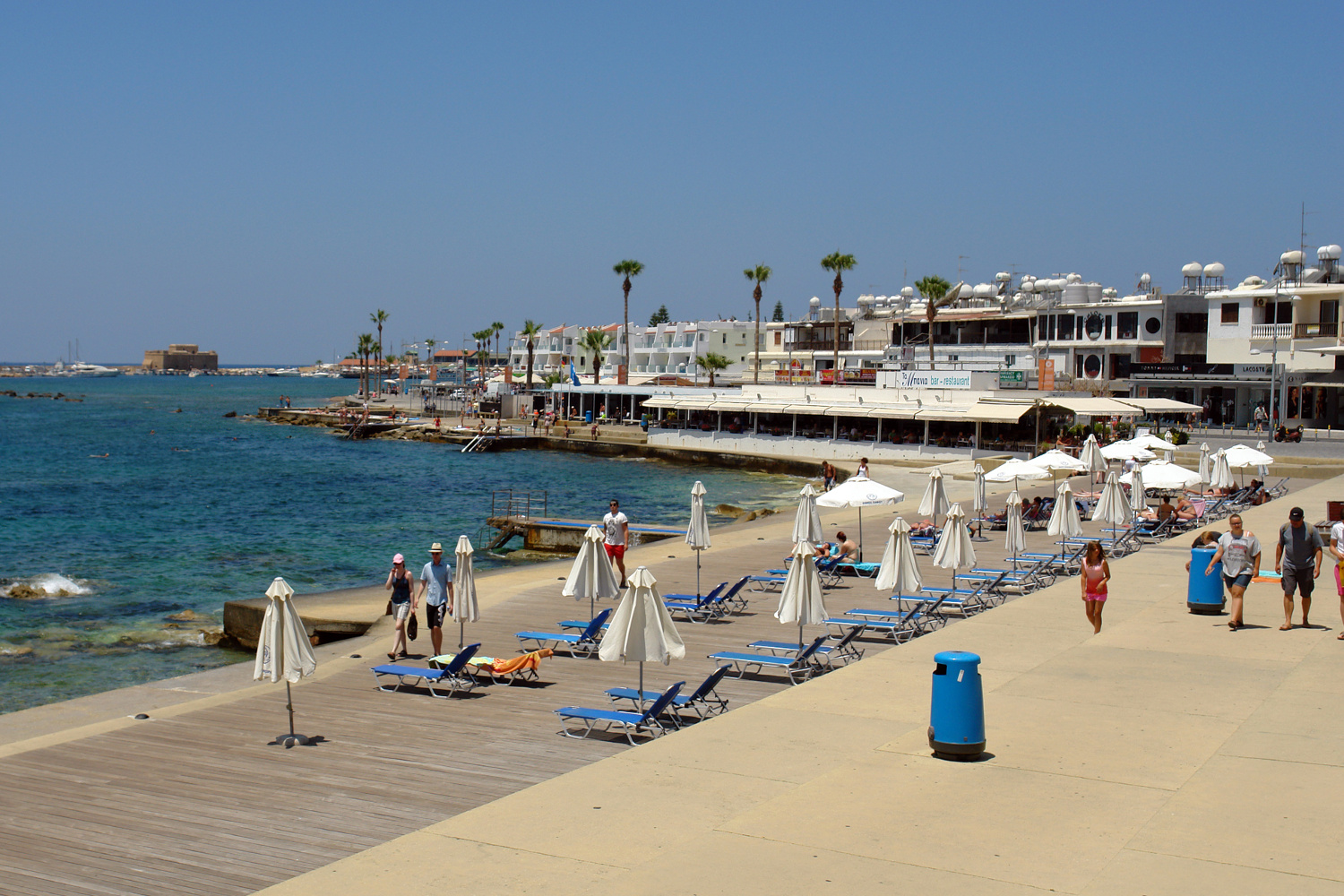

 Architecture
Architecture
 Eurovision Song Contest,ESC
Eurovision Song Contest,ESC
 FIFA Fussball-Weltmeisterschaft 1998
FIFA Fussball-Weltmeisterschaft 1998

 Financial
Financial
 ***Global Financial Center
***Global Financial Center
 France
France
 UEFA European Championship 2016
UEFA European Championship 2016
 Women's Soccer World Cup 2019
Women's Soccer World Cup 2019

 History
History
 N 2000 - 2100 AD
N 2000 - 2100 AD

 Ile-de-France
Ile-de-France

 International cities
International cities
 *European Capital of Culture
*European Capital of Culture

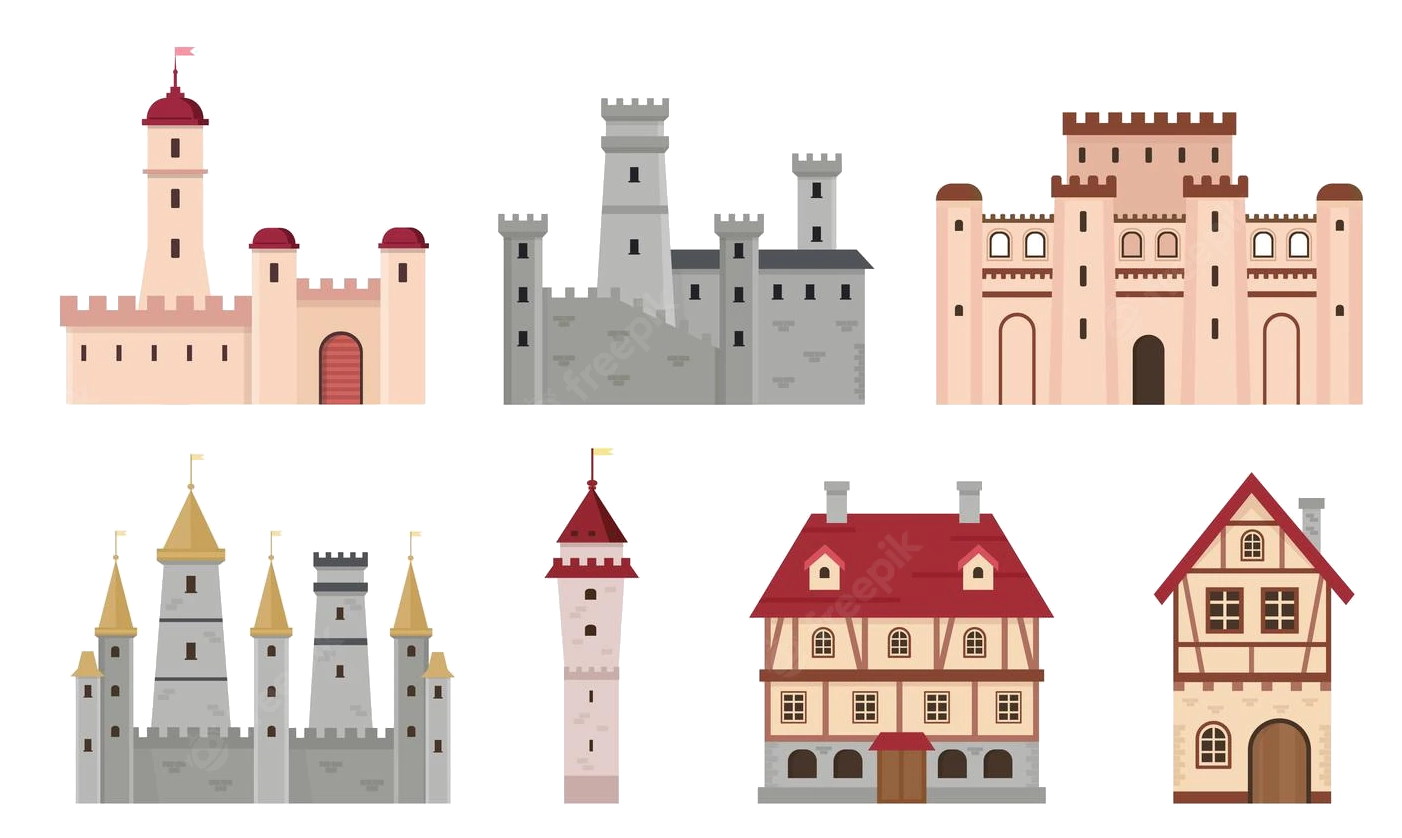 Medieval cities in Europe
Medieval cities in Europe
 Olympic Summer Games
Olympic Summer Games

 2024 Summer Olympics
2024 Summer Olympics
 Seine
Seine

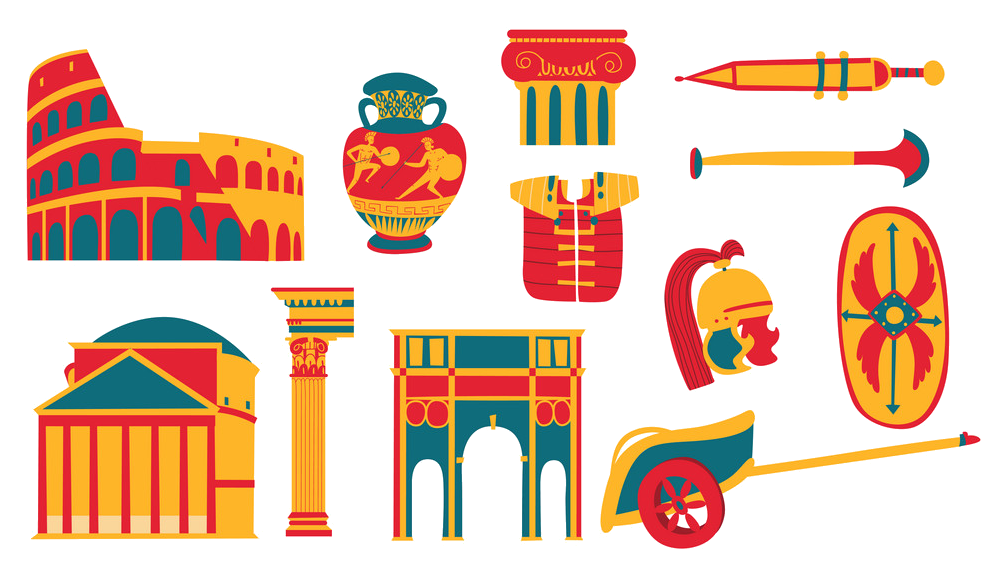 Cities founded by the Romans
Cities founded by the Romans

 World Heritage
World Heritage

巴黎市(法语:Paris)是法国的首都和最大城市,也是法国的政治与文化中心。其隶属法兰西岛大区之下的巴黎省(编号第75省;仅辖有1个同名的省区与市镇),也是法兰西岛大区的核心。目前所谓的巴黎市辖区范围大至仅为旧巴黎城墙内(环城道路内侧),并未包含巴黎扩张发展的大巴黎实际都市区域,巴黎市辖区内依照发展历史共分成20个区,,自从1860年代开始就没有重大变化。截至2009年为止,巴黎市内人口超过223万[1] ,巴黎都会区的人口逾1,200万[2] ,是欧洲最大的都会区之一[3]。
巴黎在将近1,000年的时间中是西方世界最大的城市,也曾经是世界上最大的城市(16世纪至19世纪之间)[4][5][6]。目前是世界上最重要的政治与文化中心之一,对于教育、娱乐、时尚、科学、媒体、艺术与政治等方面皆有重大影响力,被认为是世界上最重要的全球城市之一[7][8][9][10] ,一般普世观念上与日本东京、美国纽约、英国伦敦并列世界四大国际级都市。许多国际组织都将总部设立在巴黎,例如联合国教育、科学及文化组织、经济合作与发展组织、国际商会或巴黎俱乐部等。巴黎也是欧洲绿化最深[11] 与最适合人类居住的城市之一[12] ,也是世界上生活费用最高的城市之一[13][14]。
巴黎与法兰西岛大区大约贡献法国4分之1的国内生产总值,在2009年为5,521亿欧元[15] 。根据估计,巴黎是欧洲第一[16] 或第二大城市经济体,也是世界上第六大城市经济体[17]〈按购买力平价PPP调整〉。总共有33间财富世界500强企业的总部设立在巴黎都会区[18],是欧洲最集中的地区。巴黎市辖区范围外的商业区拉德芳斯是欧洲最大的中央商务办公区[19]。巴黎的高等教育机构是欧盟最集中的地区[20],高等教育研究与发展支出也是欧洲最高的地区。巴黎也被认为是世界上最适合研发创新的城市之一[21]。每年有4,200万人造访巴黎与邻近都会区,也让巴黎成为世界上最多观光客造访的城市[20]。巴黎与与邻近都会区总共有3,800个法国国家遗产与4个世界遗产[20]。巴黎也是1989年的欧洲文化之城。
Paris (deutsch: [paˈʁiːs] ![]()
![]() ; französisch: [paʁi]
; französisch: [paʁi] ![]()
![]() ) ist die Hauptstadt der Französischen Republik, Hauptort der Region Île-de-France und Globalstadt. Mit rund 2,13 Millionen Einwohnern ist Paris die viertgrößte Stadt der Europäischen Union (EU). Der Großraum ist mit über 12,5 Millionen Menschen die größte Metropolregion der EU.[1][2][3][4]
) ist die Hauptstadt der Französischen Republik, Hauptort der Region Île-de-France und Globalstadt. Mit rund 2,13 Millionen Einwohnern ist Paris die viertgrößte Stadt der Europäischen Union (EU). Der Großraum ist mit über 12,5 Millionen Menschen die größte Metropolregion der EU.[1][2][3][4]
Mit einer vergleichsweise kleinen Stadtfläche von 105,40 Quadratkilometern ist Paris mit 20.238 Einwohnern pro Quadratkilometer die am dichtesten besiedelte Großstadt Europas. Das zusammenhängend bebaute städtische Siedlungsgebiet (Unité urbaine de Paris) ist 2845 Quadratkilometer groß und geht somit weit über die politische Grenze der Stadt Paris hinaus. 2015 zählte die Unité urbaine de Paris 10.706.072 Einwohner, was einer Bevölkerungsdichte von 3763 Einwohnern je Quadratkilometer entspricht und womit Paris zu den Megastädten zählt.[5] Paris ist das politische, wirtschaftliche sowie kulturelle Zentrum des zentralistisch organisierten Frankreichs und mit vier Flughäfen und sechs Kopfbahnhöfen dessen größter Verkehrsknotenpunkt. Teile des Seineufers zählen heute zum UNESCO-Welterbe. Die Stadt ist Sitz der UNESCO und darüber hinaus der OECD und der ICC. Sehenswürdigkeiten wie der Eiffelturm, die Kathedrale Notre-Dame oder der Louvre machen die Stadt zu einem beliebten Touristenziel. Mit rund 16 Millionen ausländischen Touristen pro Jahr ist die Stadt hinter London und Bangkok eine der meistbesuchten Städte weltweit.[6]
Das heutige Paris entwickelte sich seit dem 3. Jahrhundert v. Chr. aus der keltischen Siedlung „Lutetia“ auf der Île de la Cité. Später errichteten die Römer an der Seine eine Stadt, die im 6. Jahrhundert zunächst eine Hauptresidenz des Fränkischen Reiches wurde. Eine Blütezeit der Kunst und Kultur erlebte Paris im 16. Jahrhundert unter Franz I. Durch den Absolutismus, insbesondere unter Ludwig XIV. im 17. Jahrhundert, wurde die Stadt um zahlreiche barocke Gebäude und Prachtstraßen bereichert und so zu einem beispielhaften Muster für barocken Städtebau. Obwohl die Königsresidenz 1682 nach Versailles verlegt wurde, blieb Paris aufgrund seiner politischen und wirtschaftlichen Bedeutung das Zentrum des Landes. Mit der Französischen Revolution kam ab 1789 eine welthistorische Bedeutung zu. Die Industrialisierung führte im 19. Jahrhundert zu einem enormen Bevölkerungszuwachs, sodass 1846 erstmals die Grenze von einer Million Einwohnern überschritten wurde. In den folgenden Jahrzehnten bekam die Stadt durch die sogenannte Belle Époque und sechs Weltausstellungen weltweite Beachtung.
パリ(仏: Paris[1]、巴里)は、フランス北部、イル=ド=フランス地域圏にある都市。フランスの首都であり、イル=ド=フランス地域圏の首府である。
フランス最大の都市であり、同国の政治、経済、文化などの中心である。ロンドン、ニューヨーク、香港、東京などと並ぶ世界トップクラスの世界都市でもある。行政上では、1コミューン単独で県を構成する特別市であり、ルーヴル美術館を含む1区を中心に、時計回りに20の行政区が並ぶ(エスカルゴと形容される[2])。
市域はティエールの城壁跡に造られた環状高速道路の内側の市街地(面積は86.99km2。参考:東京都・山手線の内側は63km2、ニューヨーク市・マンハッタンは59km2)、および、その外側西部のブローニュの森と外側東部のヴァンセンヌの森を併せた形となっており、面積は105.40 km2。ケスタ地形を呈するパリ盆地のほぼ中央に位置し、市内をセーヌ川が貫く。この川の中州であるシテ島を中心に発達した。市内の地形は比較的平坦であるが、標高は最低でセーヌ川沿いの35メートル、最高でモンマルトルの丘の130メートルである[3]。北緯49度とやや高緯度に位置するが、温かい北大西洋海流と偏西風によって一年を通して比較的温暖となっており、西岸海洋性気候の代表的な都市である。
世界有数の大都市であり、アメリカのシンクタンクが2017年に発表した総合的な世界都市ランキングにおいて、ロンドン、ニューヨークに次ぐ世界3位の都市と評価された[4]。日本の民間シンクタンクによる2017年発表の「世界の都市総合力ランキング」(森記念財団都市戦略研究所、森ビル)では、ロンドン、ニューヨーク、東京に次ぐ世界4位の都市と評価された[5]。フランス経済の中心地で、世界屈指の経済都市であり、多国籍企業の本社数や資本市場の規模などビジネス分野を総合評価した都市ランキングでは、ロンドンと共にヨーロッパでトップクラスであり、世界500大企業の本社数では、ニューヨークやロンドンを凌ぎ、西洋の都市では最多である。2014年のアメリカのダウ・ジョーンズらの調査によると、世界7位の金融センターと評価されており、欧州ではロンドンに次ぐ2位である[6]。
パリは年間外国人観光客数が世界一の観光都市である。歴史的な建物を観ることができ、ルーヴル美術館、ポンピドゥーセンターなどを始めとした一流の美術館で厖大な数の一流の美術品を観賞できる。また世界最古のバレエ団や、世界で最も古くから存在している劇団などの公演を楽しむこともできる。
パリ出身者・居住者は男性がパリジャン(仏: Parisien、フランス語発音: [parizjɛ̃] パリズィヤン)、女性がパリジェンヌ(仏: Parisienne、フランス語発音: [parizjɛn] パリズィエンヌ)と呼ばれる。1960年代以降、旧植民地であったアフリカ中部・北部やインドシナ半島、更に近年は中近東や東欧、中国などからの移民も増え、パリジャン・パリジェンヌも多民族・多人種化している。
市域人口は1950年代の約290万人を絶頂に減少し続けたが、ここ数年は微増傾向に転じており、2011年現在で約225万人である(INSEEによる)。2011年の近郊を含む都市的地域の人口では1,200万人を超えており、ロンドンを凌ぐEU最大の都市部を形成している[7]。
Paris (French pronunciation: [paʁi] (![]() listen)) is the capital and most populous city of France, with an area of 105 square kilometres (41 square miles) and a population of 2,206,488.[5][6] Since the 17th century, Paris has been one of Europe's major centres of finance, commerce, fashion, science, music, and painting. The Paris Region had a GDP of €681 billion (US$850 billion) in 2016, accounting for 31 per cent of the GDP of France.[7] In 2013–2014, the Paris Region had the third-highest GDP in the world and the largest regional GDP in the EU. According to the Economist Intelligence Unit Worldwide Cost of Living Survey in 2018, Paris was the second-most expensive city in the world, behind Singapore and ahead of Zurich, Hong Kong, Oslo and Geneva.[8]
listen)) is the capital and most populous city of France, with an area of 105 square kilometres (41 square miles) and a population of 2,206,488.[5][6] Since the 17th century, Paris has been one of Europe's major centres of finance, commerce, fashion, science, music, and painting. The Paris Region had a GDP of €681 billion (US$850 billion) in 2016, accounting for 31 per cent of the GDP of France.[7] In 2013–2014, the Paris Region had the third-highest GDP in the world and the largest regional GDP in the EU. According to the Economist Intelligence Unit Worldwide Cost of Living Survey in 2018, Paris was the second-most expensive city in the world, behind Singapore and ahead of Zurich, Hong Kong, Oslo and Geneva.[8]
The City of Paris's administrative limits form an East-West oval centred on the island at its historical heart, the Île de la Cité; this island is near the top of an arc of the river Seine that divides the city into southern Rive Gauche (Left Bank) and northern Rive Droite regions. Paris is the core of a built-up area that extends well beyond its limits: commonly referred to as the agglomération Parisienne, and statistically as a unité urbaine (a measure of urban area), the Paris agglomeration's 2013 population of 10,601,122 made it the largest urban area in the European Union.[3][not in citation given] City-influenced commuter activity reaches well beyond even this in a statistical aire urbaine de Paris (a measure of metropolitan area), that had a 2013 population of 12,405,426,[9] a number one-fifth the population of France,[10] the largest metropolitan area in the Eurozone.
The city is a major rail, highway, and air-transport hub served by two international airports: Paris-Charles de Gaulle (the second busiest airport in Europe after London Heathrow Airport with 69.5 million passengers in 2017) and Paris-Orly.[11][12] Opened in 1900, the city's subway system, the Paris Métro, serves 5.23 million passengers daily,[13] and is the second busiest metro system in Europe after Moscow Metro. Paris's Gare du Nord is one of the ten busiest railway stations in the world, with 262 million passengers in 2015.[14]
Paris is especially known for its museums and architectural landmarks: the Louvre was the most visited art museum in the world in 2017, with 8.1 million visitors.[15][16] The Musée d'Orsay and Musée de l'Orangerie are noted for their collections of French Impressionist art, and the Pompidou Centre Musée National d'Art Moderne has the largest collection of modern and contemporary art in Europe. The historical district along the Seine in the city centre is classified as a UNESCO Heritage Site. Popular landmarks in the centre of the city include the Cathedral of Notre Dame de Paris and the Gothic royal chapel of Sainte-Chapelle, both on the Île de la Cité; the Eiffel Tower, constructed for the Paris Universal Exposition of 1889; the Grand Palais and Petit Palais, built for the Paris Universal Exposition of 1900; the Arc de Triomphe on the Champs-Élysées, and the Basilica of Sacré-Coeur on the hill of Montmartre. Paris received 23 million visitors in 2017, measured by hotel stays, with the largest numbers of foreign visitors coming from the United States, the UK, Germany and China.[17][18] It was ranked as the third most visited travel destination in the world in 2017, after Bangkok and London.[19]
The football club Paris Saint-Germain and the rugby union club Stade Français are based in Paris. The 80,000-seat Stade de France, built for the 1998 FIFA World Cup, is located just north of Paris in the neighbouring commune of Saint-Denis. Paris hosts the annual French Open Grand Slam tennis tournament on the red clay of Roland Garros. Paris hosted the Olympic Games in 1900, 1924 and will host the 2024 Summer Olympics. The 1938 and 1998 FIFA World Cups, the 2007 Rugby World Cup, and the 1960, 1984, and 2016 UEFA European Championships were also held in the city and, every July, the Tour de France bicycle race finishes there.
Paris (prononcé [pa.ʁi] Écouter) est la capitale de la France. Elle se situe au cœur d'un vaste bassin sédimentaire aux sols fertiles et au climat tempéré, le bassin parisien, sur une boucle de la Seine, entre les confluents de celle-ci avec la Marne et l'Oise. Ses habitants s’appellent les Parisiens. Paris est également le chef-lieu de la région Île-de-France et l'unique commune française qui est en même temps un département. Commune centrale de la métropole du Grand Paris, créée en 2016, elle est divisée en arrondissements, comme les villes de Lyon et de Marseille, au nombre de vingt. L’État y dispose de prérogatives particulières exercées par le préfet de police de Paris.
Ville la plus peuplée de France, elle est quatrième parmi les aires urbaines européennes derrière Moscou, Istanbul et Londres et la 29e plus peuplée du monde. Paris compte 2,21 millions d'habitants au 1er janvier 2015. L'agglomération parisienne s’est largement développée au cours du XXe siècle, rassemblant 10,71 millions d'habitants au 1er janvier 2015, et son aire urbaine (l'agglomération et la couronne périurbaine) comptait 12,53 millions d'habitants.
La position de Lutèce, sur une île permettant le franchissement du grand fleuve navigable qu'est la Seine par une voie reliant le Nord et le Sud des Gaules, en fait dès l'Antiquité une cité importante, capitale des Parisii, puis lieu de séjour d'un empereur romain. Sa position au centre du territoire contrôlé par les rois Francs la fait choisir comme capitale de la France à la place de Tournai. Située au cœur d'un territoire agricole fertile avec un climat humide et doux, Paris devient une des principales villes de France au cours du Xe siècle, avec des palais royaux, de riches abbayes et une cathédrale ; au cours du XIIe siècle, avec l'Université de Paris, la cité devient un des premiers foyers en Europe pour l’enseignement et les arts. Le pouvoir royal se fixant dans cette ville, son importance économique et politique ne cesse de croître. Ainsi, au début du XIVe siècle, Paris est l'une des villes les plus importantes du monde chrétien. Au XVIIe siècle, elle est la capitale de la principale puissance politique européenne, au XVIIIe siècle l'un des plus grands centres culturels de l’Europe et au XIXe siècle la capitale des arts et des plaisirs. Paris joue donc un rôle culturel, politique et économique majeur dans l’histoire de l'Europe et du monde occidental au cours du IIe millénaire.
Symbole de la culture française, abritant de nombreux monuments, la ville, surnommée la Ville Lumière, attire en 2017 près de 34 millions de visiteurs ce qui en fait une des capitales les plus visitées au monde. Paris occupe également une place prépondérante dans le monde dans le milieu de la mode, du luxe et de la haute gastronomie. La capitale française n'est jumelée qu'avec une seule autre ville, Rome, ce qui est valable dans l'autre sens, avec ce slogan : « Seul Paris est digne de Rome, seule Rome est digne de Paris ». Paris sera, par ailleurs, en 2024 la deuxième ville avec Londres à avoir accueilli trois fois les Jeux olympiques après ceux de 1900 et ceux de 1924.
La ville est, avec sa banlieue, la capitale économique et commerciale de la France, ainsi que sa première place financière et boursière. Elle accueillera en 2019 l'Autorité bancaire européenne. La région parisienne, avec un produit intérieur brut (PIB) de 649 milliards d'euros en 2014, est un acteur économique européen majeur et la première région européenne par le PIB régional, devant la Rhénanie du Nord-Westphalie (627 milliards d'euros) et le Grand Londres (509 milliards d'euros). Elle est également l'une des régions les plus riches d'Europe avec un PIB par habitant de 52 900 euros en 2014. Paris est le siège de plusieurs organisations internationales comme l'UNESCO ou l'OCDE.
La densité de ses réseaux ferroviaire, autoroutier et de ses structures aéroportuaires en font un point de convergence pour les transports nationaux et internationaux. Cette situation résulte d’une longue évolution, en particulier des conceptions centralisatrices des monarchies et des républiques, qui donnent un rôle considérable à la capitale dans le pays et tendent à y concentrer les institutions. Depuis les années 1960, les politiques gouvernementales oscillent toutefois entre déconcentration et décentralisation. La macrocéphalie dont est atteinte la ville se concrétise par la convergence de la plupart des réseaux routiers et ferroviaires du pays en son centre et des écarts démographiques et économiques disproportionnés entre la capitale et la province : près de 19 % de la population française vit dans l'aire urbaine de Paris.
París (en francés Paris, pronunciado ![]() [paʁi] (?·i)) es la capital de Francia y su ciudad más poblada. Capital de la región de Isla de Francia (o "Región Parisina"), es constituida en la única comuna unidepartamental del país. Está situada a ambos márgenes de un largo meandro del río Sena, en el centro de la cuenca parisina, entre la confluencia del río Marne y el Sena, aguas arriba, y el Oise y el Sena, aguas abajo.
[paʁi] (?·i)) es la capital de Francia y su ciudad más poblada. Capital de la región de Isla de Francia (o "Región Parisina"), es constituida en la única comuna unidepartamental del país. Está situada a ambos márgenes de un largo meandro del río Sena, en el centro de la cuenca parisina, entre la confluencia del río Marne y el Sena, aguas arriba, y el Oise y el Sena, aguas abajo.
La ciudad de París, dentro de sus estrechos límites administrativos, tiene una población de 2 273 305 habitantes en 2015.2 Sin embargo, en el siglo XX, el área metropolitana de París se expandió más allá de los límites del municipio de París, y es hoy en día, con una población de 12 405 426 habitantes en 2013, la segunda área metropolitana del continente europeo (después de Londres) y la 28ª del mundo.4
La región de París es junto con la de Londres, uno de los núcleos económicos más importantes de Europa.6 Con 607 000 millones de euros (845 000 millones de dólares), produjo más de una cuarta parte del producto interior bruto (PIB) de Francia en 2011.7 La Défense es el principal barrio de negocios de Europa,8 alberga la sede social de casi la mitad de las grandes empresas francesas, así como la sede de veinte de las 100 más grandes del mundo.
Durante el siglo XIX y XX junto con la ciudad de Londres, 9 París fue el centro de desarrollo de proyectos arquitectónicos dentro del marco de la Revolución Industrial y sus famosas exposiciones. Ejemplos de ello son: el Mercado de la Madeleine, en 1824; las Grandes Halles iniciadas en 1853 , las Galerie des Machines y la Torre Eiffel ambas realizadas en la exposición de París de 1889.
Es conocida también como la «Ciudad Luz» (la Ville lumière), es el destino turístico más popular del mundo, con más de 42 millones de visitantes extranjeros por año.10 Cuenta con muchos de los monumentos más famosos y admirados del orbe: la Torre Eiffel, la Catedral de Notre Dame, la avenida de los Campos Elíseos, el Arco de Triunfo, la Basílica del Sacré Cœur, el Palacio de Los Inválidos, el Panteón, el Arco de la Defensa, la Ópera Garnier o el barrio de Montmartre, entre otros. También alberga instituciones de reconocimiento mundial: el Louvre, el Museo de Orsay y el Museo Nacional de Historia Natural de Francia, así como un extenso sistema de educación superior de prestigio internacional. París ocupa un lugar importante en el ámbito de la cultura, la gastronomía, la moda y el lujo.
Пари́ж (фр. Paris [paˈʁi] ![]() слушать) — город, столица Франции, административный центр региона Иль-де-Франс. Образует коммуну и департамент, разделённый на 20 округов.
слушать) — город, столица Франции, административный центр региона Иль-де-Франс. Образует коммуну и департамент, разделённый на 20 округов.
Население: 2,274 млн человек (2014 год), пятый по величине город Евросоюза[2]. В пределах агломерации Большой Париж проживает 10,6 млн человек (2011 год). Расположен на севере Франции, на равнине Парижского бассейна, на берегах реки Сены.
Главный политический, экономический и культурный центр Франции. Относится к глобальным городам, мировым финансовым центрам. Штаб-квартира ЮНЕСКО и других международных организаций.
Исторический центр, образованный островом Сите и обоими берегами Сены, складывался на протяжении веков. Во второй половине XIX века претерпел коренную реконструкцию. В пригороде расположен дворцово-парковый ансамбль Версаль.
Основан в III веке до н. э. кельтским племенем паризиев. С III—IV веков известен как галло-римский город Паризии. Существует несколько версий происхождения топонима «Париж». С конца X века с перерывами является столицей Франции.

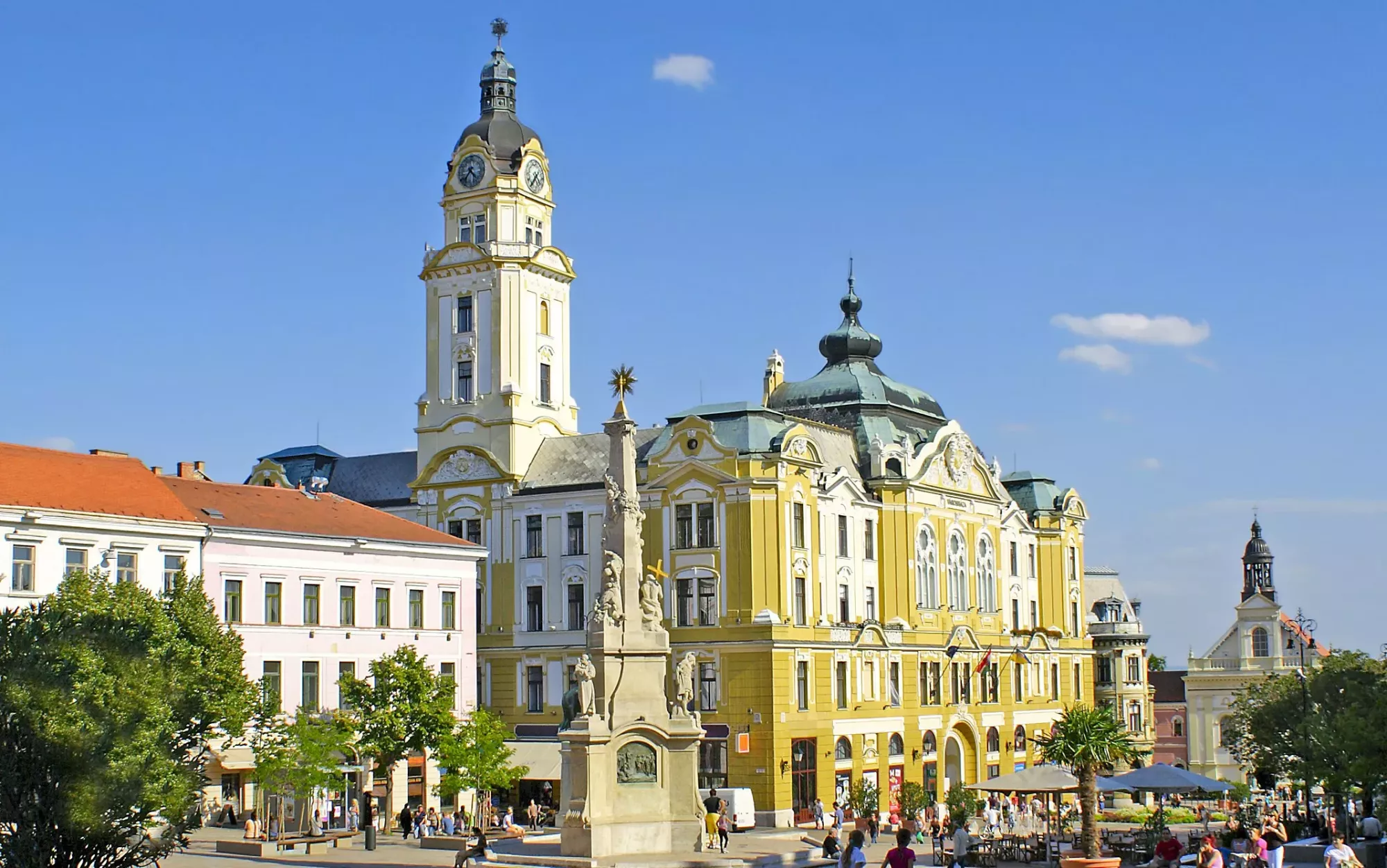


位于多瑙河和德拉瓦河之间的佩奇(Pécs)是匈牙利最具吸引力的城市之一。这里气候宜人,历史悠久,拥有华丽的博物馆和全国最好的土耳其遗迹。佩奇还以音乐、歌剧和芭蕾而闻名。
两千年前,罗马人在潘诺尼亚省兴建了一座重要城市,取名绍比纳,这就是今天的佩奇。1009年,圣伊斯特万国王在这里设立了教会;1367年,安茹王朝的拉约什一世国王在这里创建了匈牙利的第一所大学。除布达外,这里是当年文艺复兴运动的最重要中心。
1543年,土耳其人迅速占领了这座城市和主教城堡。直到1686年撤出前,这里说得上的建筑也就是土耳其人建的两座清真寺和庙宇。
1780年前佩奇一直归主教管辖。在这段和平的几十年间,教会的中心得到恢复,市政得以重建,市中心就是现在的塞切尼广场。广场中央是卡西姆帕夏在 1550年以前建的清真寺,也就是现在教区教堂的核心。它不仅在总体上,而且在许多细节上也都保留了土耳其年代的原貌。 (Quelle:http://eur.bytravel.cn)
佩奇[3](匈牙利语:Pécs,IPA:[peːʧ];德语:Fünfkirchen,音译为芬夫基兴[4],意思是“五座教堂”)是匈牙利第五大城市、巴兰尼亚州首府。面积162.61平方公里,2016年人口为145,347人。
与埃森与伊斯坦布尔并列为2010年欧洲文化之都。其座右铭为“无边界的城市”。佩奇的早期基督教陵墓为世界文化遗产。
佩奇拥有大量的煤炭及铀资源,并为著名的纳伊瓷器瓷器生产中心。教育方面,佩奇大学始建于1367年,为匈牙利第一所大学,由路易一世创立。
1921年8月14日,在此宣布成立巴兰尼亚—巴亚塞尔维亚—匈牙利共和国。
Pécs [ˈpeːʧ], deutsch Fünfkirchen (lateinisch Quinque Ecclesiae, slowakisch Päťkostolie, kroatisch Pečuh, serbisch-kyrillisch Печуј Pečuj), ist mit 138.420 Einwohner (1. Jan. 2022) die fünftgrößte Stadt Ungarns und Sitz des Komitats Baranya und hat selber Komitatsrecht. Sie liegt nahe der kroatischen Grenze.
Die Stadt ist Bischofssitz und Sitz einer Universität sowie Zentrum der Donauschwaben und Heimat von neun ethnischen Minderheiten mit eigenen Selbstverwaltungen.
Pécs liegt am Fuße des Mecsek-Gebirges und die zahlreichen Baudenkmäler verleihen dem Ort eine mediterrane Atmosphäre. Am 19. Oktober 2005 gewann die Stadt die nationale Vorausscheidung für den Titel „Kulturhauptstadt Europas 2010“ und richtete das Jahr unter dem Motto Pécs2010 Kulturhauptstadt Europas aus.
Die Universität Pécs bietet das Studium der Humanmedizin und der Zahnmedizin in deutscher und englischer Sprache[2] sowie ein englischsprachiges Studium der Pharmazie[3]. Ein englischsprachiges Studium kann zusätzlich an der Faculty of musical and visual arts absolviert werden.
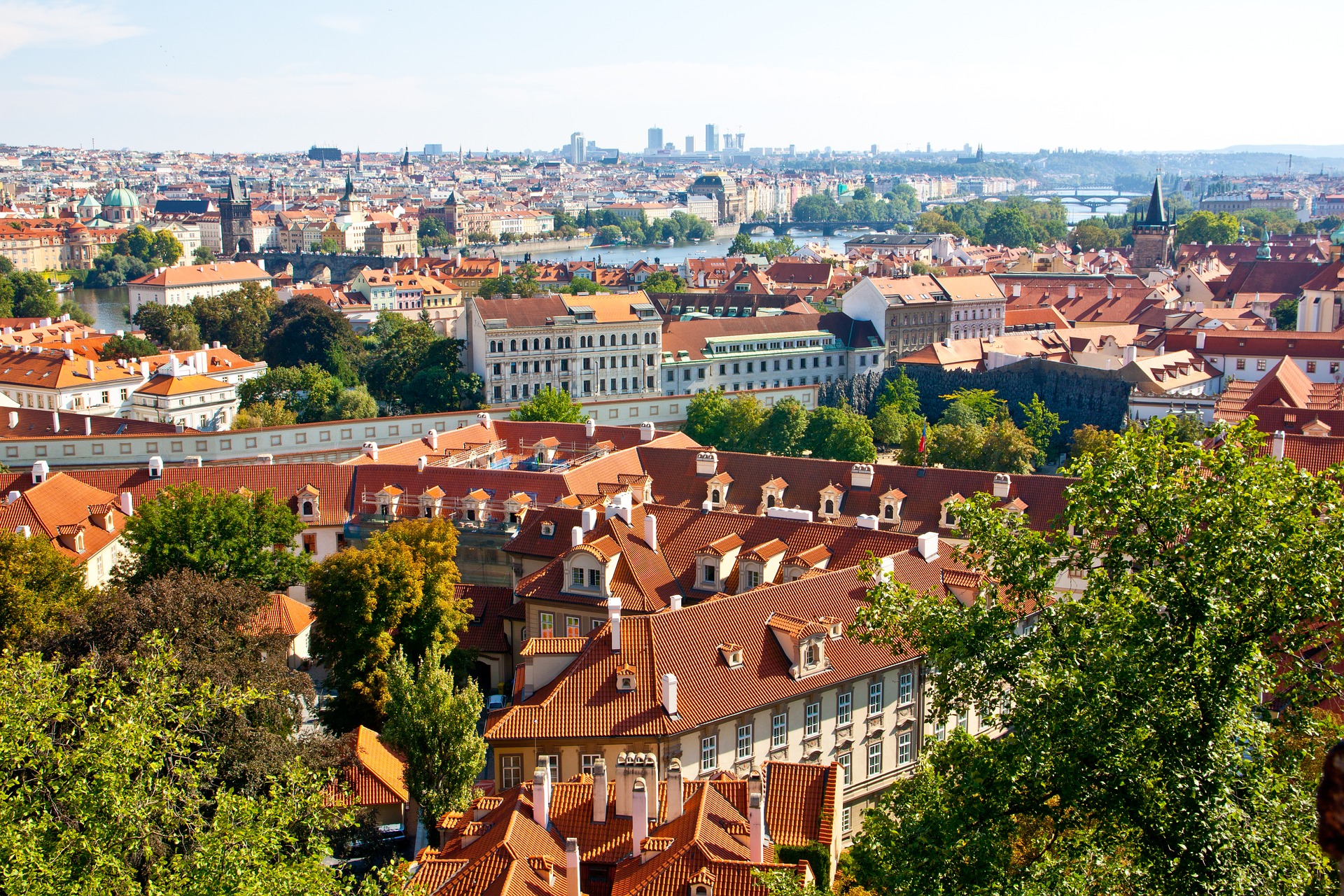
Pilsen (tschechisch Plzeň, Ausspracheⓘ/? ˈpl̩.zɛɲ) ist die viertgrößte Stadt Tschechiens, liegt im Westen von Böhmen und ist der Verwaltungssitz der Pilsner Region (Plzeňský kraj). In Pilsen leben rund 180.000 Einwohner,[2] die Agglomeration hat etwa 305.000 Einwohner.[3] Bekannt ist Pilsen vor allem wegen des Pilsner Biers und der Škoda-Werke. Die Universitäts- und Bistumsstadt hat eine bedeutende Stellung als Industrie-, Handels-, Kultur- und Verwaltungszentrum. 2015 war Pilsen – gemeinsam mit der Stadt Mons in Belgien – Kulturhauptstadt Europas.
比尔森[1](捷克语:Plzeň;德语:Pilsen)位于捷克波希米亚地区西部,距离布拉格约90公里,是比尔森州的首府,也是该国第四大城市。比尔森位在拉德布扎河、姆热河、乌赫拉瓦河与乌斯拉瓦河四条河流的汇集之处,它们在此汇合成贝龙卡河。
著名的比尔森啤酒即于19世纪发源于比尔森。
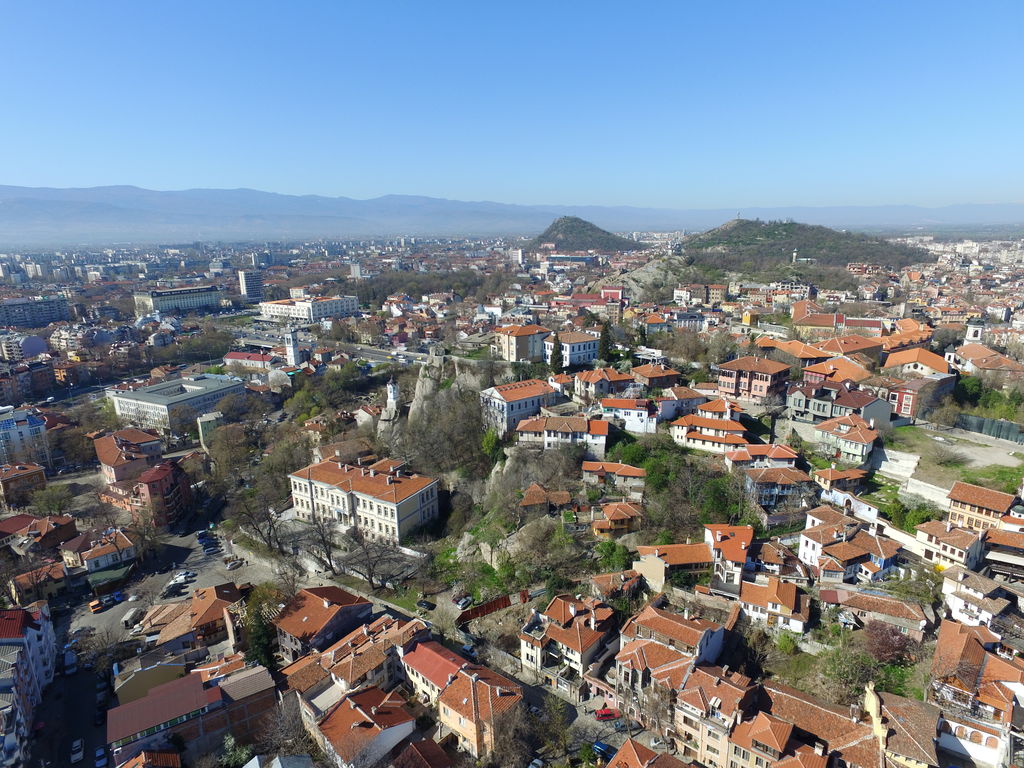

Porto ['poɾtu] ist die zweitgrößte Stadt Portugals. Die Stadt, deren Name im Deutschen wörtlich Hafen heißt, liegt an der Atlantikküste am Nordufer des dort mündenden Douro. Sie hat 238.000 Einwohner und ist Hauptstadt des gleichnamigen Distriktes. Mit der gleichnamigen Metropolregion, in der 1,76 Millionen Menschen leben, bildet sie das wirtschaftliche und kulturelle Zentrum Nordportugals.
Schon seit der Zeit der römischen Besatzung vor allem eine kommerzielle Hafenstadt, entwickelte sich Porto im Zeitalter der europäischen Expansion zu einer der bedeutendsten europäischen Handelsmetropolen. Das historische Zentrum gehört heute zum UNESCO-Weltkulturerbe. Während sich diese Bedeutung mit dem Niedergang des portugiesischen Kolonialreichs verlor, bleibt Porto bis heute das wirtschaftliche und industrielle Zentrum Portugals.
Porto ist namensgebend und bekannt für den Portwein, der aus seinem Anbaugebiet nach Porto transportiert, im angrenzenden Vila Nova de Gaia gelagert, und von Porto in die Welt exportiert wird. 2001 war Porto Kulturhauptstadt Europas.
Im Englischen, seltener auch im Deutschen, ist für Porto die Bezeichnung Oporto noch üblich. Diese entstammt einem Missverständnis durch englischsprachige Hörer, die den, in der portugiesischen Sprache dem Namen Porto vorangestellten, männlichen bestimmten Artikel o als Teil des Städtenamens begriffen.

 Architecture
Architecture

 History
History

 International cities
International cities
 *European Capital of Culture
*European Capital of Culture

 Medieval cities in Europe
Medieval cities in Europe
 Vltava
Vltava
 Salt roads in Germany
Salt roads in Germany
 Czech Republic
Czech Republic

 World Heritage
World Heritage



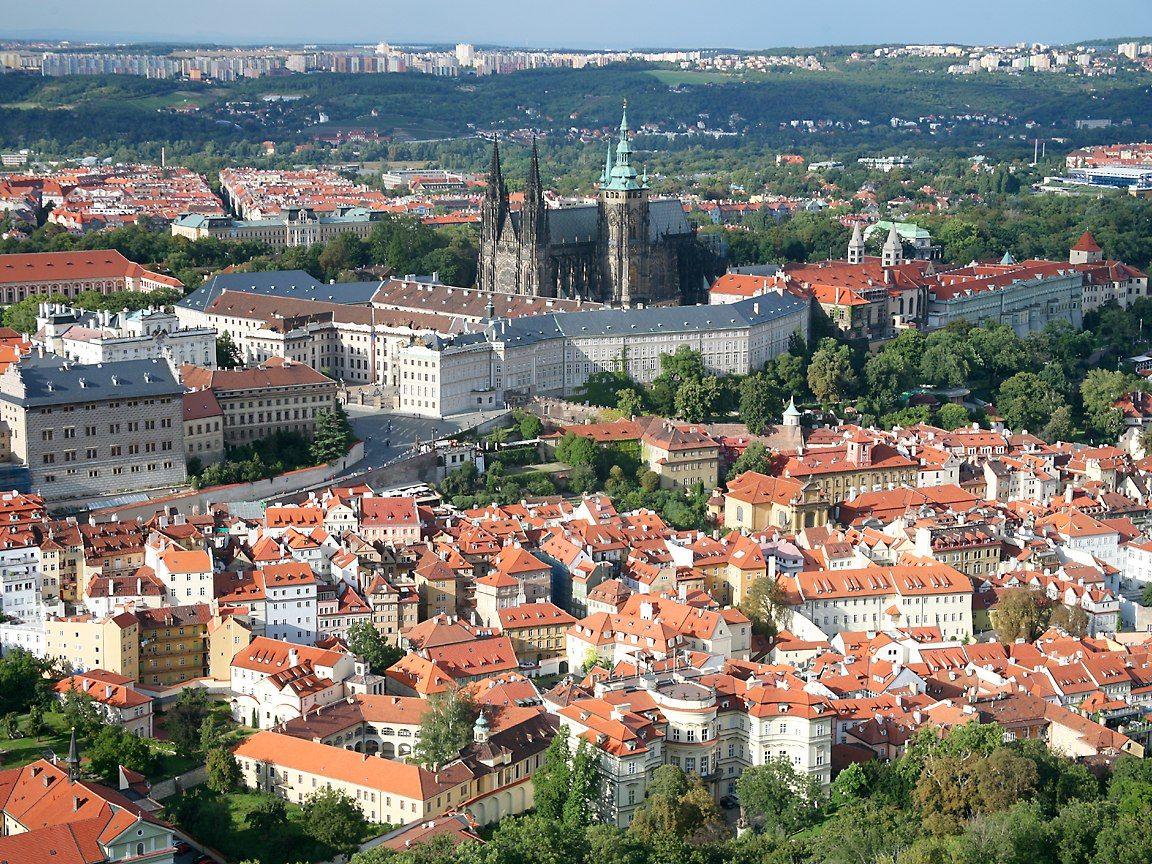
Prag (tschechisch Praha [ˈpraɦa]; ) ist die Hauptstadt und zugleich bevölkerungsreichste Stadt der Tschechischen Republik. Mit über 1,2 Millionen Einwohnern belegt Prag den vierzehnten Rang der größten Städte der Europäischen Union. Die Hauptstadt Prag ist eine der 14 Regionen Tschechiens und eine der reichsten Regionen Europas[2].
Prag ist die historische Hauptstadt Böhmens und war eine bedeutende königliche und kaiserliche Residenzstadt im Heiligen Römischen Reich, besonders unter den Přemysliden, Luxemburgern und Habsburgern. Um 1230 wurde die seit der Frühgeschichte bewohnte Siedlung zu einer königlichen Stadt erhoben und im 14. Jahrhundert als Residenzstadt Karls IV. zu einem politisch-kulturellen Zentrum in Europa. Mit der Karls-Universität wurde in Prag 1348 die erste Universität in Mitteleuropa gegründet. Auch das Konservatorium und die Technische Universität gehören zu den ältesten ihrer Art in Europa. Über Jahrhunderte hinweg war Prag eine Stadt, in der sich tschechische, deutsche und jüdische Kultur begegneten.
Prague (/prɑːɡ/; Czech: Praha [ˈpraɦa] (![]() listen), German: Prag) is the capital and largest city in the Czech Republic, the 14th largest city in the European Union[9] and the historical capital of Bohemia. Situated in the north-west of the country on the Vltava river, the city is home to about 1.3 million people, while its larger urban zone is estimated to have a population of 2.6 million.[10] The city has a temperate climate, with warm summers and chilly winters.
listen), German: Prag) is the capital and largest city in the Czech Republic, the 14th largest city in the European Union[9] and the historical capital of Bohemia. Situated in the north-west of the country on the Vltava river, the city is home to about 1.3 million people, while its larger urban zone is estimated to have a population of 2.6 million.[10] The city has a temperate climate, with warm summers and chilly winters.
Prague has been a political, cultural and economic centre of central Europe complete with a rich history. Founded during the Romanesque and flourishing by the Gothic, Renaissance and Baroque eras, Prague was the capital of the kingdom of Bohemia and the main residence of several Holy Roman Emperors, most notably of Charles IV (r. 1346–1378).[11] It was an important city to the Habsburg Monarchy and its Austro-Hungarian Empire. The city played major roles in the Bohemian and Protestant Reformation, the Thirty Years' War and in 20th-century history as the capital of Czechoslovakia, during both World Wars and the post-war Communist era.[12]
Prague is home to a number of famous cultural attractions, many of which survived the violence and destruction of 20th-century Europe. Main attractions include the Prague Castle, the Charles Bridge, Old Town Square with the Prague astronomical clock, the Jewish Quarter, Petřín hill and Vyšehrad. Since 1992, the extensive historic centre of Prague has been included in the UNESCO list of World Heritage Sites.
The city has more than ten major museums, along with numerous theatres, galleries, cinemas and other historical exhibits. An extensive modern public transportation system connects the city. Also, it is home to a wide range of public and private schools, including Charles University in Prague, the oldest university in Central Europe.[13]
Prague is classified as a "Beta+" global city according to GaWC studies[14] and ranked sixth in the Tripadvisor world list of best destinations in 2016.[15] Its rich history makes it a popular tourist destination and as of 2014, the city receives more than 6.4 million international visitors annually. Prague is the fifth most visited European city after London, Paris, Istanbul and Rome.[16]
Prague (prononcé [pʁag] ; en tchèque Praha [ˈpra.ɦa]) est la capitale et la plus grande ville de la République tchèque. Elle est à la fois l’une des quatorze régions du pays, le chef-lieu de la région administrative de Bohême-Centrale2,3 et la capitale de la région historique de Bohême. Elle est traversée par la Vltava (Moldau en allemand) et compte 1 280 508 habitants en 20164.
Prague est située en plein cœur de l'Europe centrale. Elle fut par le passé capitale du royaume de Bohême, du Saint-Empire romain germanique et de la Tchécoslovaquie (ČSR, ČSSR et enfin ČSFR). La ville aux mille tours et mille clochers (qui est encore la caractéristique architecturale de la ville) a miraculeusement échappé aux destructions de la Seconde Guerre mondiale et offre une architecture mêlant les styles préroman, roman, gothique, baroque, rococo, Art nouveau et cubiste. En 1968, le Printemps de Prague et l'écrasement du « socialisme à visage humain » par les troupes de l'URSS et du Pacte de Varsovie ont profondément marqué les Praguois et inspiré la culture des années 1960-1980. Depuis 1992, le centre ville historique est inscrit sur la liste du patrimoine mondial par l'UNESCO.
Prague est la sixième région urbaine la plus riche de l'Union européenne en termes de PIB par habitant PPA5, derrière la région urbaine de Hambourg mais devant l'Île-de-France6, la progression est continue ces dernières années. En 2015, selon Eurostat, le chômage était de 2,8 % dans la région de Prague7. Le contexte économique national est également plutôt favorable car la République tchèque est, avec les Pays-Bas, le pays où le taux de pauvreté est le plus bas d'Europe : il s'établit à 10 % de la population8, contre 16 % de moyenne pour l'Union européenne. Prague fait partie des villes mondiales Alpha - (villes globales) d'après le classement GaWC9 de l'université de Loughborough.
Praga (en checo, Praha ![]() [ˈpraɦa] (?·i)) es la capital de la República Checa, tal y como recoge la Constitución del país.1 Antes fue capital del Reino de Bohemia y de Checoslovaquia. También es la capital de la región de Bohemia.
[ˈpraɦa] (?·i)) es la capital de la República Checa, tal y como recoge la Constitución del país.1 Antes fue capital del Reino de Bohemia y de Checoslovaquia. También es la capital de la región de Bohemia.
Situada a orillas del río Moldava, tiene aproximadamente 1,2 millones de habitantes, lo que la convierte en la ciudad más poblada del país y la séptima de Europa Central. El área metropolitana de Praga cuenta con una población de 1,9 millones de habitantes.2
Desde 1992 el casco histórico de la ciudad es Patrimonio de la Humanidad.34 Su belleza y patrimonio histórico la convierten en una de las veinte ciudades más visitadas del mundo.5
Praga se ha desarrollado desde el siglo IX, convirtiéndose en una de las capitales más importantes de Europa en los siglos XVIII y XIX. Sin embargo, en el siglo XX sufrió las dos guerras mundiales y, principalmente, la dictadura nazi. Tras la segunda guerra, quedó dentro de la esfera de influencia soviética. Tras la Revolución de terciopelo y la caída del Muro de Berlín la ciudad se ha ido adaptando a la economía de mercado.
Пра́га (чеш. Praha [ˈpraɦa]) — статутный город и столица Чешской Республики, административный центр Среднечешского края и двух его районов: Прага-Восток и Прага-Запад. Образует самостоятельную административно-территориальную единицу страны.
Население: 1,3 млн человек (2018 год). Четырнадцатый по величине город в Евросоюзе. Расположена на берегах реки Влтавы в сорока километрах от её впадения в Лабу.
Главный политический, экономический и культурный центр Чехии. Крупный туристический центр Европы. Количество туристов в 2012 году превысило 5,4 млн человек[3].
С X века столица Чешского государства; в 1526—1918 годы главный город Богемии под властью Габсбургов; с 1918 по 1992 год столица Чехословакии; с 1993 года — Чешской Республики. Исторический центр внесён в список Всемирного наследия ЮНЕСКО.

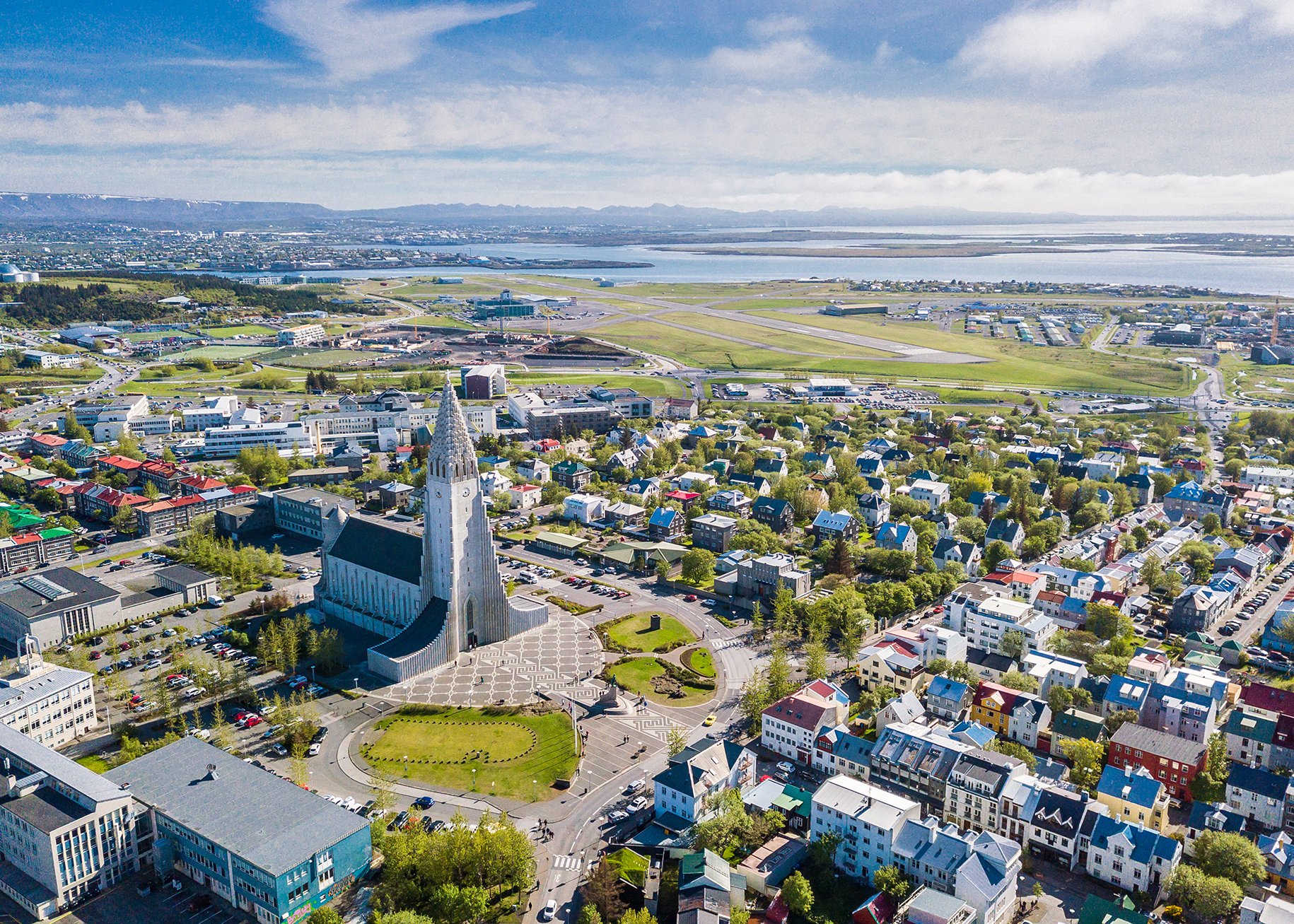

雷克雅未克(冰岛语:Reykjavík,冰岛语音标: [ˈreiːkjaˌviːk] ![]() 聆听)位于法赫萨湾南部,是斯堪的纳维亚北欧岛国冰岛的首都,亦是冰岛最大的城市。雷克雅未克地理上非常接近北极圈,其纬度64°08'N,是全世界最北的首都。是全世界(北欧)市容最干净无烟城、全靠地热能的首都圈。在2012年,雷克雅未克人口大概为120,000人(大雷克雅未克区人口则超过200,000人),是全冰岛的文化、经济和政务活动中心。
聆听)位于法赫萨湾南部,是斯堪的纳维亚北欧岛国冰岛的首都,亦是冰岛最大的城市。雷克雅未克地理上非常接近北极圈,其纬度64°08'N,是全世界最北的首都。是全世界(北欧)市容最干净无烟城、全靠地热能的首都圈。在2012年,雷克雅未克人口大概为120,000人(大雷克雅未克区人口则超过200,000人),是全冰岛的文化、经济和政务活动中心。
雷克雅未克曾被丹麦及挪威管治过,亦在其管治期间发展了本地的经济及产业,故此,于冰岛独立成主权国家时,该城便被立为首都。现时,冰岛议会大厅、政府大楼、国家博物馆等设施都设立于雷克雅未克。
Reykjavík [ˈreiːcaˌviːk] ist die Hauptstadt Islands und die am nördlichsten gelegene Hauptstadt der Welt (Breitengrad 64° 08' N, 269 Kilometer südlich des nördlichen Polarkreises). Die Stadt bildet mit einigen ländlichen Gebieten und etlichen Inseln die Gemeinde Reykjavíkurborg (isl. Stadt Reykjavík). Reykjavíkurborg ist die mit Abstand größte Gemeinde in dem weitere sieben Gemeinden umfassenden Gemeindeverband Höfuðborgarsvæðið (wörtl.: das Hauptstadtgebiet oder der Hauptstadtbereich). In diesem dichtbesiedelten Gemeindeverband lebten Ende 2010 insgesamt 202.341 Menschen.[1]
Der Name Reykjavík ist das isländische Wort für „Rauchbucht“; er rührt vermutlich von den Dämpfen der heißen Quellen in der Umgebung, und wird einem Missverständnis des ersten Siedlers Ingólfur Arnarson zugeschrieben. Die Stadt ist die älteste permanente Siedlung des Landes. Obwohl die ersten Siedler bereits im Jahre 870 n. Chr. das Land bevölkerten, wuchs das Gebiet nur sehr langsam und wurde erst 1786 offiziell zur Stadt erhoben.
Reykjavík ist mit 123.246 Einwohnern (Stand: 1. Januar 2017) die größte Stadt Islands; hier wohnen etwa 37,3 % der Gesamtbevölkerung des Landes. In der Metropolregion Reykjavík leben über 200.000 Menschen. Die Stadt liegt am Atlantik, genauer gesagt an der Faxaflói-Bucht unterhalb des etwa 900 Meter hohen Hausberges Esja.
In der Stadt befinden sich die meisten Fakultäten der Universität des Landes und verschiedene andere Hochschulen, Theater, Museen und Kultureinrichtungen sowie ein Hochseehafen. Mitten in der Stadt liegt ein kleiner See namens Tjörnin. Dieser See ist zugleich auch einer der größten Brutplätze für Wasservögel im Südwesten von Island.
レイキャヴィーク[2](Reykjavík アイスランド語発音: [ˈreiːcaˌviːk] (![]() 音声ファイル))は、アイスランドの首都。
音声ファイル))は、アイスランドの首都。
アイスランド島南西部のレイキャネース半島の根元に位置し、ファクサ湾に面する港湾都市である。首都としては世界最北の北緯64度8分に位置する。市名は「煙たなびく湾」という意味で、最初の上陸者が近郊の温泉から上る湯煙を炎の煙と見間違えて名づけた地名と言われている。
人口は市内のみで約12万人、周囲の市を含めた首都圏全体で約21万人である。アイスランドの全人口の約2/3がこの一帯に集中している。
近海は南方からの暖流と北極方向からの寒流とがぶつかる潮目が存在している関係で世界有数の好漁場となっており、古くから水産業が産業の根幹を占めてきた。ただし、近年は水産業依存からの脱却を図っており、低い所得税率、ヨーロッパとアメリカの中間という地理条件、充実したインフラストラクチャー網を活かして外国資本の積極誘致を行っている。
市内の暖房・給湯システムは地熱の熱エネルギーのみで維持されており、自然エネルギーとの共存が図られている。他にも燃料電池自動車に水素を供給する水素ステーションを建設し、それを利用した路線バスを世界で初めて運行するなど、クリーンエネルギー政策の点では世界をリードしている。
市内では犬を飼うことが法律で禁止されているが、申請することで飼うことができる。また、世界で最も人口1人当たりの書店の密度が高い町と住民は自称している。
世界的な義肢メーカーのオズール(Össur)が本社を置いている。
Reykjavík (/ˈreɪkjəvɪk, -viːk/ RAYK-yə-vik, -veek; Icelandic: [ˈreiːcaˌviːk] (![]() listen))[4][5] is the capital and largest city of Iceland. It is located in southwestern Iceland, on the southern shore of Faxa Bay. Its latitude is 64°08' N, making it the world's northernmost capital of a sovereign state. With a population of around 123,300 (and over 216,940 in the Capital Region),[3] it is the heart of Iceland's cultural, economic and governmental activity, and is a popular tourist destination.[6]
listen))[4][5] is the capital and largest city of Iceland. It is located in southwestern Iceland, on the southern shore of Faxa Bay. Its latitude is 64°08' N, making it the world's northernmost capital of a sovereign state. With a population of around 123,300 (and over 216,940 in the Capital Region),[3] it is the heart of Iceland's cultural, economic and governmental activity, and is a popular tourist destination.[6]
Reykjavík is believed to be the location of the first permanent settlement in Iceland, which, according to Ingólfr Arnarson, was established in AD 874. Until the 19th century, there was no urban development in the city location. The city was founded in 1786 as an official trading town and grew steadily over the following decades, as it transformed into a regional and later national centre of commerce, population, and governmental activities. It is among the cleanest, greenest, and safest cities in the world.[7][8][9]
Reykjavik (en islandais Reykjavík [ˈreiːcaˌviːk], littéralement « Baie-des-Fumées ») est la capitale de l'Islande. Elle se situe à environ 250 km au sud du cercle polaire arctique, ce qui en fait la capitale la plus septentrionale d'un État souverain (la capitale du Groenland, Nuuk, étant située quelques kilomètres plus au nord). Elle s'étale entre deux fjords, dans une zone comptant de nombreuses sources chaudes, le long d'une baie (vik en islandais). Elle est ainsi considérée comme la ville la "plus verte du monde" : on y compte environ 410 m² d'espaces verts par habitant.1
C'est la ville la plus peuplée du pays, avec environ 120 000 habitants. Avec l'agglomération, elle regroupe pratiquement les deux tiers de la population de l'île, soit environ 200 000 habitants.
Son emplacement se situe à l'endroit même où s'installèrent en 874 les premiers colons conduits par Ingólfur Arnarson. Un groupement de 302 habitants ayant eu lieu en 1786 est à l'origine de la municipalité d'aujourd'hui.
C'est à Reykjavik que sont concentrées les activités politiques, industrielles, commerciales, et culturelles du pays.
Reykjavík (pronuncia IPA: [ˈreɪcaviːk]) è la capitale e principale città d'Islanda. Con circa 120.000 abitanti è il cuore politico, culturale ed economico dell'isola. Vi si trovano le maggiori facoltà universitarie del paese, teatri, musei e istituzioni culturali ed i principali servizi caratteristici di una capitale occidentale. Forma con altre città un conglomerato urbano di circa 206.000 abitanti, ovvero 2/3 dell'intera popolazione islandese (circa 320.000 abitanti).
Si crede che Reykjavík sia stato il primo insediamento permanente dell'isola. La sua fondazione avvenne ad opera di Ingólfur Arnarson intorno all'anno 870. Il significato islandese del nome, in italiano, può essere tradotto in baia fumosa e fu scelto dal fondatore per via dei fumi geotermali che circondano la zona. Lo sviluppo urbano, dalle precedenti fattorie, incominciò solo nel XVIII secolo.
Reikiavik2 (en islandés Reykjavík ![]() /ˈreiːcaˌviːk/ (?·i), «bahía humeante»;3 oficialmente en islandés Reykjavíkurborg, «Ciudad de Reikiavik») es la capital y ciudad más poblada de Islandia. Situada al sur de la bahía Faxaflói, en una zona donde abundan los géiseres, su latitud es de 64º 08' N, muy cerca del círculo polar ártico, lo que la convierte en la capital más septentrional de un Estado soberano. Durante el invierno solo recibe cuatro horas diarias de luz solar y durante el verano las noches son tan claras como el día.
/ˈreiːcaˌviːk/ (?·i), «bahía humeante»;3 oficialmente en islandés Reykjavíkurborg, «Ciudad de Reikiavik») es la capital y ciudad más poblada de Islandia. Situada al sur de la bahía Faxaflói, en una zona donde abundan los géiseres, su latitud es de 64º 08' N, muy cerca del círculo polar ártico, lo que la convierte en la capital más septentrional de un Estado soberano. Durante el invierno solo recibe cuatro horas diarias de luz solar y durante el verano las noches son tan claras como el día.
Su población es de 121 960 habitantes (2015),1 un tercio de la del país. El distrito de la capital alcanza los 212 120 habitantes.1 Es una de las ciudades más limpias, verdes y seguras del mundo.456
Рейкья́вик[2] (исл. Reykjavík, [ˈreiːcaˌviːk] ![]() слушать; в буквальном переводе означает «дымящаяся бухта») — столица и крупнейший город, а также община Исландии. Население — 118 814 жителей (2012), а включая города-спутники — около 202 000, что составляет около 63 % всего населения страны (321 857). Это самая северная в мире столица государства. Рейкьявик расположен в юго-западной части острова, на полуострове Сельтьяднарнес. Город расположен в зоне сдвига тектонических плит, поэтому для него характерны небольшие землетрясения. Через Рейкьявик протекает река Эдлидаау. Она не судоходна, однако богата рыбой. Так как город находится недалеко от полярного круга, для него характерны очень светлые белые ночи летом и очень короткий (около 4 часов) световой день зимой.
слушать; в буквальном переводе означает «дымящаяся бухта») — столица и крупнейший город, а также община Исландии. Население — 118 814 жителей (2012), а включая города-спутники — около 202 000, что составляет около 63 % всего населения страны (321 857). Это самая северная в мире столица государства. Рейкьявик расположен в юго-западной части острова, на полуострове Сельтьяднарнес. Город расположен в зоне сдвига тектонических плит, поэтому для него характерны небольшие землетрясения. Через Рейкьявик протекает река Эдлидаау. Она не судоходна, однако богата рыбой. Так как город находится недалеко от полярного круга, для него характерны очень светлые белые ночи летом и очень короткий (около 4 часов) световой день зимой.
 Eurovision Song Contest,ESC
Eurovision Song Contest,ESC
 Hansestadt
Hansestadt

 International cities
International cities
 *European Capital of Culture
*European Capital of Culture
 Latvia
Latvia
 Silk road
Silk road

 World Heritage
World Heritage

 Important port
Important port

里加(拉脱维亚语:Rīga, 英语:Riga)是拉脱维亚的首都,北欧地区波罗的海国家中最大、最繁忙的城市,位于波罗的海岸边,道加瓦河口。
里加是波罗的海国家主要的政治、经济、文化、教育和工商业中心。里加是历史上汉萨同盟主要商业城市,其历史中心被列入世界遗产名录,联合国教科文组织特别认为里加丰富的新艺术运动建筑是世界上独一无二的[2]。
欧盟欧洲电子通讯监管机构总部以及北大西洋公约组织的战略通讯中心设在里加。里加是欧洲城市组织及欧洲首都联盟组织成员。2014年欧洲文化之都,世界合唱比赛,2006年北大西洋公约组织峰会,2003年欧洲歌唱大赛,2006年世界男子冰球锦标赛,2003年世界女子冰壶球锦标赛等活动的举办地。
Riga (lettisch Rīga) ist die Hauptstadt Lettlands und mit rund 700.000 Einwohnern größte Stadt des Baltikums. Mit etwa einer Million Einwohnern in der Agglomeration ist Riga zudem der größte Ballungsraum in den drei baltischen Staaten. Riga ist politisches, wirtschaftliches und kulturelles Zentrum des Landes. Die alte Hansestadt ist berühmt für ihre Jugendstilbauten und ihre großzügige Anlage sowie für die gut erhaltene Innenstadt, darunter besonders die Altstadt. 2016 wurde Riga der Ehrentitel „Reformationsstadt Europas“ durch die Gemeinschaft Evangelischer Kirchen in Europa verliehen.[1]
リガ、またはリーガ[1](ラトビア語: Rīga 発音 [ˈriːɡa] (![]() 音声ファイル)、ロシア語: Рига、エストニア語: Riia、リトアニア語: Ryga、英語、ドイツ語: Riga)は、ラトビア共和国の首都で、同国最大の人口を擁する都市。人口は69万9,203人(2012年時点)。「バルト海の真珠」と讃えられる美しい港町で、その旧市街はユネスコの世界遺産(文化遺産)に登録されている。 世界遺産に登録されている旧市街「リガ歴史地区」は約300棟のアールヌーボー調の建築物の宝庫として著名である。新市街は官庁やオフィスが集まる。郊外には、ラトビア民俗博物館があり、野外博物館も兼ねている。また、保養地として知られる海岸、ユールマーラも西方にある。人口約70万人のリガ市はラトビア国内はもとより、バルト三国最大の都市でもある。市内で最も高い建築物はリガラジオ&テレビタワーである。
音声ファイル)、ロシア語: Рига、エストニア語: Riia、リトアニア語: Ryga、英語、ドイツ語: Riga)は、ラトビア共和国の首都で、同国最大の人口を擁する都市。人口は69万9,203人(2012年時点)。「バルト海の真珠」と讃えられる美しい港町で、その旧市街はユネスコの世界遺産(文化遺産)に登録されている。 世界遺産に登録されている旧市街「リガ歴史地区」は約300棟のアールヌーボー調の建築物の宝庫として著名である。新市街は官庁やオフィスが集まる。郊外には、ラトビア民俗博物館があり、野外博物館も兼ねている。また、保養地として知られる海岸、ユールマーラも西方にある。人口約70万人のリガ市はラトビア国内はもとより、バルト三国最大の都市でもある。市内で最も高い建築物はリガラジオ&テレビタワーである。
Riga (/ˈriːɡə/; Latvian: Rīga [ˈriːɡa] ( listen), Livonian: Rīgõ) is the capital and largest city of Latvia. With 641,481 inhabitants (2016),[4] it is also the largest city in the three Baltic states, home to one third of Latvia's population and one tenth of the three Baltic states' combined population.[9] The city lies on the Gulf of Riga, at the mouth of the Daugava. Riga's territory covers 307.17 km2 (118.60 sq mi) and lies 1–10 m (3 ft 3 in–32 ft 10 in) above sea level,[10] on a flat and sandy plain.[10]
listen), Livonian: Rīgõ) is the capital and largest city of Latvia. With 641,481 inhabitants (2016),[4] it is also the largest city in the three Baltic states, home to one third of Latvia's population and one tenth of the three Baltic states' combined population.[9] The city lies on the Gulf of Riga, at the mouth of the Daugava. Riga's territory covers 307.17 km2 (118.60 sq mi) and lies 1–10 m (3 ft 3 in–32 ft 10 in) above sea level,[10] on a flat and sandy plain.[10]
Riga was founded in 1201 and is a former Hanseatic League member. Riga's historical centre is a UNESCO World Heritage Site, noted for its Art Nouveau/Jugendstil architecture and 19th century wooden architecture.[11] Riga was the European Capital of Culture during 2014, along with Umeå in Sweden. Riga hosted the 2006 NATO Summit, the Eurovision Song Contest 2003, the 2006 IIHF Men's World Ice Hockey Championships and the 2013 World Women's Curling Championship. It is home to the European Union's office of European Regulators for Electronic Communications (BEREC).
In 2016, Riga received over 1.4 million visitors.[12] It is served by Riga International Airport, the largest and busiest airport in the Baltic states. Riga is a member of Eurocities,[13] the Union of the Baltic Cities (UBC)[14] and Union of Capitals of the European Union (UCEU).[15]
Riga (prononcé [ʁi.ga] ; en letton Rīga [riː.ga]) est la capitale de la Lettonie. Construite sur la mer Baltique au fond du golfe de Riga, dans lequel se jette la Daugava, c'est un centre industriel, commercial, culturel et financier majeur de la région de Vidzeme.
Riga (in lettone Rīga) è la capitale della Lettonia. Situata sul Mar Baltico alla foce del fiume Daugava, con 699.203 abitanti al censimento del 2011, è la città più grande delle Repubbliche Baltiche ed è uno dei principali centri culturali, politici ed economici della regione. Antico centro della lega anseatica, la città è gemellata con Firenze e Brema. Nel 2001 ha ospitato il Mese culturale europeo assieme a Basilea, mentre nel 2014 è stata Capitale europea della cultura affiancata ad Umeå.
Riga (en letón: Rīga  [ˈriːɡa] (?·i)) es la capital y la mayor ciudad de Letonia. Es la ciudad más grande de los Estados bálticos y el hogar de más de un tercio de la población de Letonia.1 Es el mayor centro cultural, educativo, político, financiero, comercial e industrial de la región del mar Báltico.
[ˈriːɡa] (?·i)) es la capital y la mayor ciudad de Letonia. Es la ciudad más grande de los Estados bálticos y el hogar de más de un tercio de la población de Letonia.1 Es el mayor centro cultural, educativo, político, financiero, comercial e industrial de la región del mar Báltico.
La ciudad se encuentra en el golfo de Riga, en la desembocadura del río Daugava. Tiene un área de 307,17 km² y se encuentra en una llanura arenosa entre 1 y 10 metros sobre el nivel del mar.2
Riga fue fundada en 1201 y es un antiguo miembro de la Liga Hanseática. El centro histórico de Riga, declarado Patrimonio de la Humanidad por la Unesco, destaca por su arquitectura art nouveau y sus construcciones de madera del siglo XIX.3 La ciudad fue designada Capital Europea de la Cultura en 2014, junto a Umeå en Suecia.
La ciudad está comunicada por vía aérea gracias al Aeropuerto Internacional de Riga, el aeropuerto más grande de los países bálticos.
Riga es miembro de Eurocities,4 la unión de las ciudades bálticas (UBC)5 y la Unión de Capitales de la Unión Europea (UCEU).6
Ри́га (латыш.  Rīga [ˈriːɡa], лив. Rīgõ) — столица Латвии и самый крупный город в Прибалтике с численностью населения 637 971 человека (2018 год)[2]. Политический, экономический и культурный центр страны. Находится на обоих берегах реки Даугавы, недалеко от её впадения в Рижский залив.
Rīga [ˈriːɡa], лив. Rīgõ) — столица Латвии и самый крупный город в Прибалтике с численностью населения 637 971 человека (2018 год)[2]. Политический, экономический и культурный центр страны. Находится на обоих берегах реки Даугавы, недалеко от её впадения в Рижский залив.
Рига долгое время была ганзейским городом, здесь соседствуют здания различных стилей от средневековой архитектуры старого города до модерна и современной архитектуры. Она была одним из крупнейших портов и одним из важнейших промышленных, коммерческих и культурных центров в Российской Империи. Исторический центр города внесен в список Всемирного наследия ЮНЕСКО[4]. В 2014 году Рига была выбрана одной из культурных столиц Европы[5].
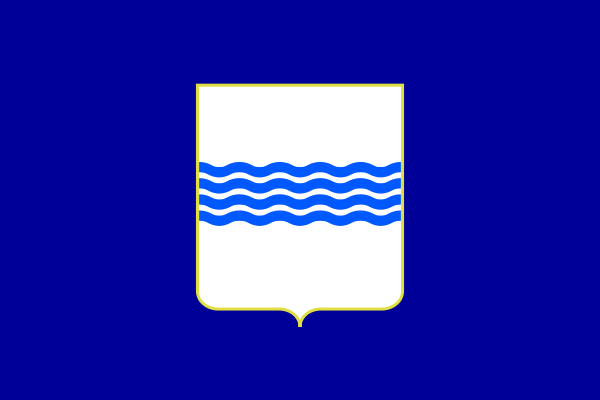 Basilicata
Basilicata